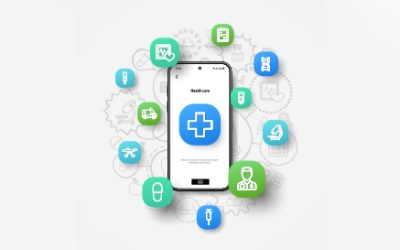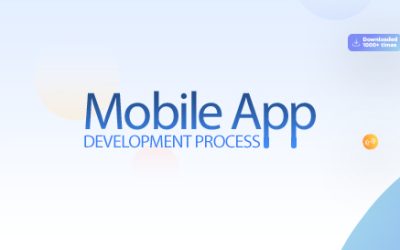A smooth and warm interaction between the doctor and the patient is important for better healthcare outcomes and improved patient/physician satisfaction. However, monitoring and treating patients remotely is a hurdle for physicians and it is a hassle for patients too to visit the facility for follow-up visits. In the present digital age with advanced technology, this gap can be filled with mobile apps, which makes mobile app development an important consideration for healthcare providers. It is the process of building and developing software and application programs for mobile phones and smart gadgets. The use of mobile is growing drastically and various studies show that our future will be ruled by mobile technology. Apps enable physicians to reach their patients anywhere any time and also help improve the operating performance of their medical practices. Mobile apps allow healthcare professionals to provide the necessary instructions to patients from time-to-time and stay updated regarding the patient’s progress effectively.
Mobile Apps are revolutionary in the present world and an increasing number of people engage with physicians through mobile apps. Mobile apps may be native apps or hybrid apps.
Native apps: These are built for specific platforms that are written in the languages the platform accepts. They are very fast and responsive and offer intuitive user input and output, and don’t require any internet connection.
Hybrid apps: Hybrid app is a combination of web apps and native apps that consist of two parts – the back end code and native shell that is downloadable and loads the code using a web view. They are less expensive and do not require any browser and can leverage device APIs. But they are a little slower than native apps and the app cannot be customized to individual platforms.
Google’s Flutter and Facebook’s React Native are narrowing the gap between hybrid and native apps. The framework of both Flutter and React are distinctive in their own ways but both offer next level app development opportunities:
- Choice of Tools and IDEs: IDE (integrated development environment) constitutes software application that provides comprehensive facilities to computer programmers for software development. Working in the development environment of your preference is essential as it allows you to work with different platforms and devices that your audience will use your app on. You need to leverage a framework where you can build your app using versatile tools and IDEs. In the case of tool selection, React provides a better range when compared to Flutter. This is because React was launched much before Flutter and is much more user-friendly for IDE developers. Though Google’s Flutter offers a more streamlined approach to configuration and setup, it is only supported by three IDEs – Android Studio, VS Code and Intelli IJDEA.
- Time for app development: The time taken for creating an app is important especially if you are on a time crunch. So using the best framework is crucial for optimum results in a short time. Flutter is known for its fast development, reloading capabilities and customization using widgets. This helps you develop a native interface for your mobile apps in minutes. React offers components that are built-in, ready-to-use and helps make development even faster.
- Client use: Developing apps in environments or frameworks that your client uses helps you make money in app development. When it comes to client use, React is more widely adopted by developers because more clients use this framework. This is because its framework has been out since 2015 and is used to build and develop popular apps by large corporations, such as Skype, Uber, and Pinterest.
- Language: You can create a mobile app effectively only if you are familiar with the programming language. Developers use language that is easy to understand to develop and build mobile apps. Both React and Flutter are different in the case of the languages they support. Flutter uses Google’s Dart programming language whereas React uses the popular programming language JavaScript. JavaScript is one of the top 50 mobile programming languages of 2018 and is used by 82.6 percent of developers. This shows that React may provide a better solution to develop a mobile app.
- Documentation: Flutter’s documentation is structured and straightforward and it is simple to read due to its clear format style whereas React’s documentation is different because it is much less structured and dependent on external development kits.
- User interface: The interface of Flutter and React are very different from each other. In the case of UI (user interface), Flutter provides various options and it is flexible enough due to its customizable widgets. It ensures a smooth, natural scrolling and rich motion APIs and animations. React provides a seamless experience with animation implementation. This is because of its extensive options for external developer’s kits for UI.
- Performance: If you are giving more importance to performance, then you may want to consider the capabilities of Flutter as it provides higher performance than React due to its standard 60 frames per second. Though React has this capability, its performance may fall short due to its need to bridge interfaces with JavaScript.
Both Flutter and React have advantages and disadvantages of their own. Choosing the right framework depends upon your need. Developing mobile apps is not an easy task; however, today there are expert medical SEO service providers that offer mobile app development to physicians and medical units. It is important to choose the right provider that offers optimum results at reasonable pricing.




